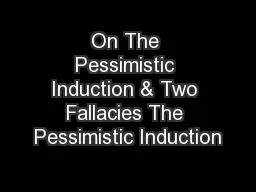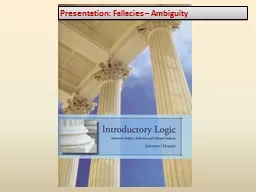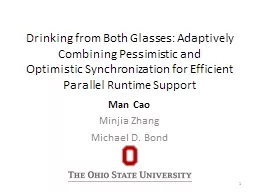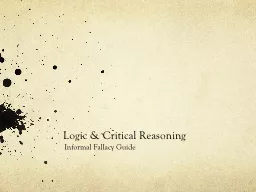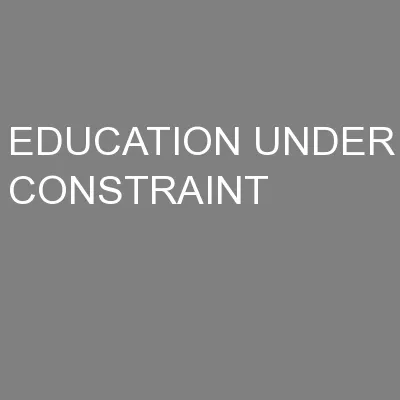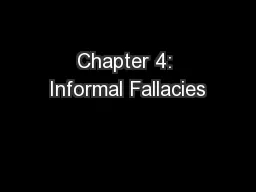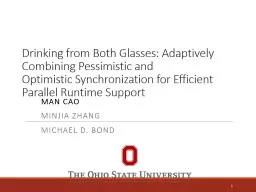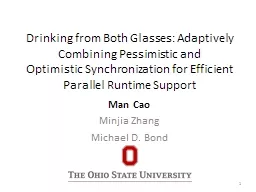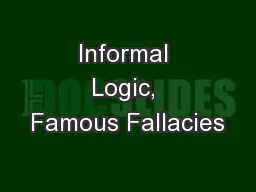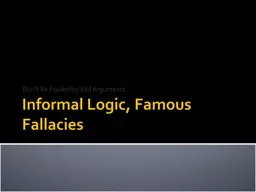PDF-On The Pessimistic Induction & Two Fallacies The Pessimistic Induction
Author : stefany-barnette | Published Date : 2015-09-23
It follows from this that the exact content of PMI is connected in a subtle way to our understanding of NMA as will be seen and the latter must be kept firmly in
Presentation Embed Code
Download Presentation
Download Presentation The PPT/PDF document "On The Pessimistic Induction & Two Falla..." is the property of its rightful owner. Permission is granted to download and print the materials on this website for personal, non-commercial use only, and to display it on your personal computer provided you do not modify the materials and that you retain all copyright notices contained in the materials. By downloading content from our website, you accept the terms of this agreement.
On The Pessimistic Induction & Two Fallacies The Pessimistic Induction: Transcript
Download Rules Of Document
"On The Pessimistic Induction & Two Fallacies The Pessimistic Induction"The content belongs to its owner. You may download and print it for personal use, without modification, and keep all copyright notices. By downloading, you agree to these terms.
Related Documents

